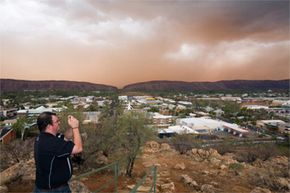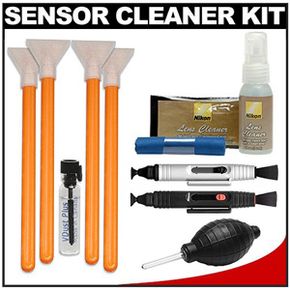Dust is amazing stuff. It collects in vast space nebulas and gloms together to form planets and ignite stars. In the atmosphere, it scatters sunlight to spark stunning sunsets. But let's face it, dust's true superpower lies in its ability to get into everything, including the expensive cameras with which we take pictures of -- well, stars and sunsets, among other things.
Dirt is fine on a desert trail or forest track but, in your optical path -- the path light traces through your camera -- it can spoil your whole shoot. When that happens, it takes more than a few puffs of air to put the snap back in your shots.
Advertisement
The question is, where to begin? Do those specks, splotches and scratches stem from a dusty sensor or from dirt on your viewfinder, mirror or lens? To find out, head to a well-lit space and take several photos of, say, a blank white sheet of paper. Increase your f-stop and set the camera to aperture-priority mode so that it automatically sets the appropriate shutter speed. Now upload your pics to a computer and zoom to a 1:1 pixel ratio (one photo pixel per screen pixel) [sources: McHugh; Stern].
If you see small, translucent spots, dark specks or thin lines that recur across photos, it's a good bet that cloth fiber, hair, pollen or dust have gotten somewhere they don't belong. To diagnose where, try fiddling with the f-stop and snapping more shots. If the dirt is located on the sensor, you'll see a change in the dots' size and clarity; if you don't, then you probably have dirt on the on the viewfinder focusing screen or the single-lens reflex (SLR) mirror. Lens shmutz is harder to diagnose, since it won't always show up on photos. Switch lenses and see if you notice a difference [sources: McHugh; Stern].
Digital SLR cameras are especially susceptible to dust because they rely on a sensor that is exposed to air every time you change lenses. The most obvious signs of a dusty sensor are loss of contrast and/or small, diffuse dots cropping up in your photos. Why are the dots so fuzzy? The specks don't actually sit on the camera sensor's photosites -- the individual light detectors populating your charge-coupled device (CCD) or complementary metal–oxide–semiconductor (CMOS) sensor. Instead, they deposit on the topmost surface of whatever stack of filters covers the sensor, which can include an anti-aliasing filter, antireflective coatings, microlenses and/or an infrared filter. That's why increasing your f-stop -- which diminishes your aperture and increases your depth of field -- casts them into sharper focus [sources: McHugh; Stern].
Unfortunately, when it comes to sensors, identifying the problem is the least of your worries.
Advertisement


